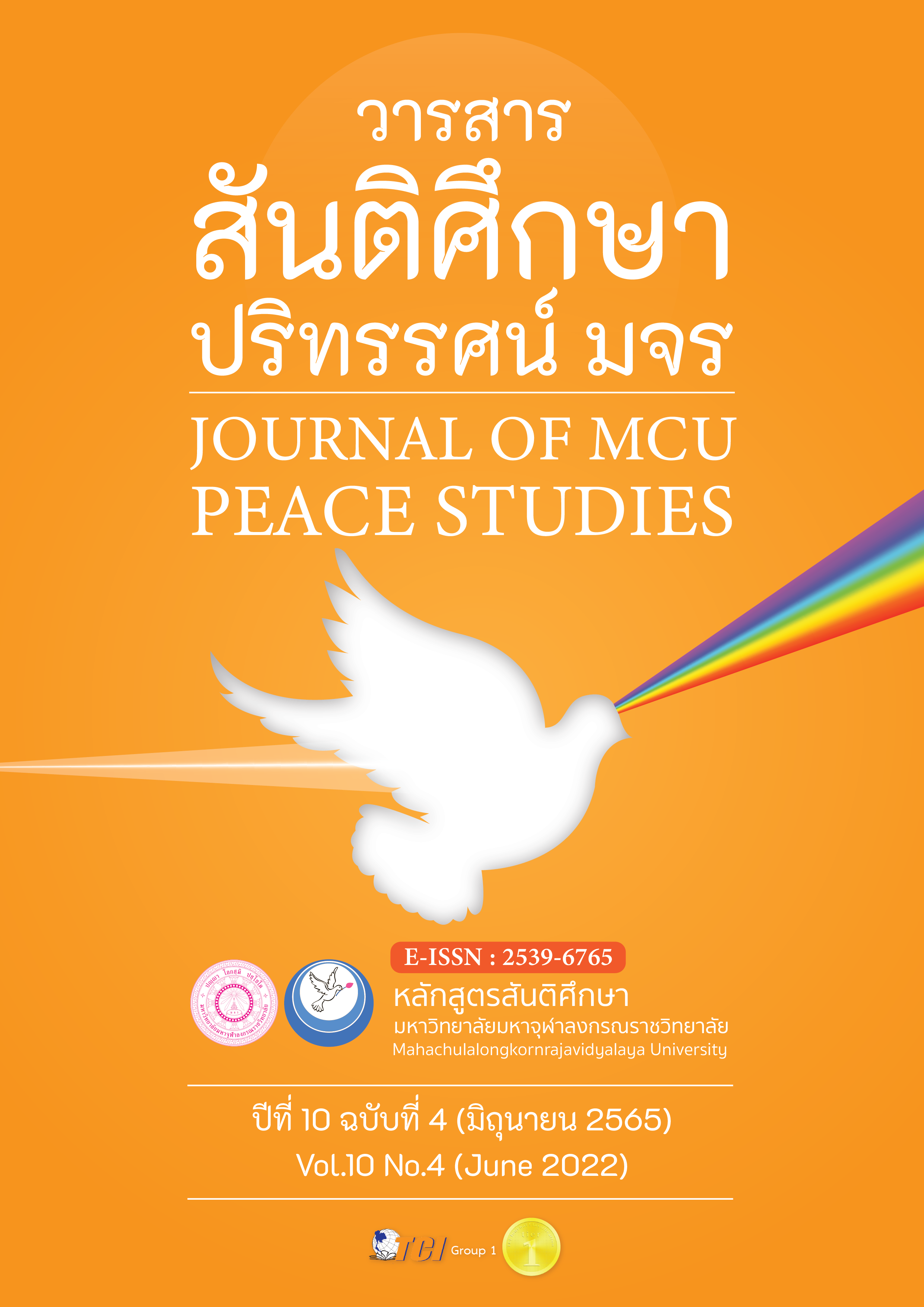The Study for Guidelines for emergency shelter for disaster victims in disaster-prone areas, Thonburi District, Bangkok
Main Article Content
บทคัดย่อ
This research aims: 1) to assess the physical condition of the temple area as a temporary shelter for the community; and 2) to study the problem on residential area in the temple area as a temporary shelter for the community. This research paper is qualitative research. The specific group of informants used in the study consisted of 5 abbots from temples in Thonburi District area which has a lot of slum communities. There were Civil temples located near slum communities with risks on emergency disasters and can be reached with the distance less than 1 kilometer. Five temples will be used as case studies of this research including: 1) Bang Sai Kai Temple; 2) Yai Sai Si Suphan Temple; 3) Kantatararam Temple; 4) Santi Tammaram Temple; and 5) Pradittharam Temple. Tools used for collecting data were survey form and structured interview form. The group of informants consisted of abbots. Obtained data were analyzed by using content analysis and the results were reported in the form of descriptive study.
The results revealed that: 1) After assessing physical condition of the temple area as a temporary shelter for the community, it was found that these 5 temples used as the case studies of this research had properties that could act as the temporary shelters for the communities compared to minimum international criteria on establishment of temporary shelter; 2) For residential dimension, physical condition of most current residential buildings was the obstacle for becoming temporary shelters.
Article Details

อนุญาตภายใต้เงื่อนไข Creative Commons Attribution-NonCommercial-NoDerivatives 4.0 International License.
ทัศนะและความคิดเห็นที่ปรากฏในบทความในวารสาร ถือเป็นความรับผิดชอบของผู้เขียนบทความนั้น และไม่ถือเป็นทัศนะและความรับผิดชอบของกองบรรณาธิการ ยินยอมว่าบทความเป็นลิขสิทธิ์ของวารสาร
เอกสารอ้างอิง
Department of Disaster Prevention and Mitigation, Ministry of Interior. (2014). Action and disaster relief plan from Earthquakes and Collapsed building in Bangkok. (1st edition). Cooperative Assembly Agriculture of Thailand Limited.
Phuwanan et al. (2014). Disaster Prevention and Mitigation Policy and Residence Development for Disaster Victims in Thailand. Journal of Public and Private Sector Management.
Sawadipanich, N, & AphaiChirarat, C. (2013). Accommodation conditions in organizing Evacuation Centers for People Experiencing flooding: the Perspectives of Children and Parents (Research Report). Bangkok: Nurse Council Journal.
Ruttho, N, & Rasisutthi, S. (2015). Conceptual framework for Temporary Shelter Design for Earthquake Victims (Research Report). Khon Kaen University: Academic journal Faculty of Architecture.
Knowledge Management Center for Disaster Management (OECD). (2011). Guidelines for Establishing a Community Temporary Shelter. Japan.
Asian Disaster Preparedness Center. (2017). Guideline to Choosing Safe Areas and
Management of a Temporary Shelter for flooding in Thailand. Bangkok: Publisher Themma Group Co., Ltd.
Office of the National Economic and Social Development Board. (2011). Disaster Management and Reconstruction after the Disaster: Case Studies of Thailand and other Countries. Bangkok: Publishing Company Centre Diamond Rung Printing Limited.
Chuay Kamchoo, A. (2012). Experience in Managing Shelters for Flood Victims:
Thammasat University, Rangsit Centre (Research Century). Bangkok: Journal of the
Nursing Council.
International Organization for Migration (IOM), Thailand (2011). Guidelines for management Temporary Shelter Centre. Bangkok.
National Disaster Management Authority Ministry of Home Affairs Government of India.
(2019). National Guidelines On Temporary Shelters for Disaster – Affected Families. New Delhi: NDMA Bhawan A-1, Safdarjung Enclave.
Reconstruction of Sendai. (2015). UN world conference on disaster risk reduction.
Sendai Japan.
The Japan Iron and Steel Federation Japanese Society of Steel Construction. (2016).
Steel Construction Today & Tomorrow. Japan.


